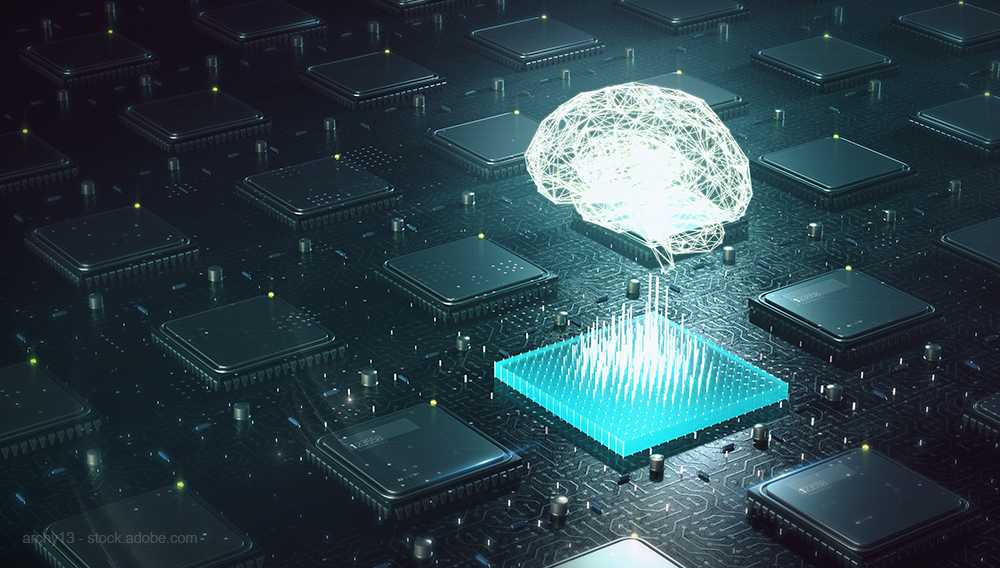Deep Learning Algorithm Helps with Earlier Alzheimer’s Disease Prediction
Prediction occurred an average of 75.8 months before final diagnosis.

A deep learning algorithm with fluorine 18 fluorodeoxyglucose PET of the brain improves early prediction of Alzheimer’s disease, according to a study published in the journal Radiology.
Researchers from the University of California in San Francisco sought to develop and validate a deep learning algorithm that predicts the final diagnosis of Alzheimer disease, mild cognitive impairment, or neither at fluorine 18 (18F) fluorodeoxyglucose (FDG) PET of the brain and compare its performance to that of radiologic readers.
Related article: Artificial intelligence in radiology: Friend or foe?
The researchers obtained 2,109 prospective 18F-FDG PET brain images from 1,002 patients from the Alzheimer’s Disease Neuroimaging Initiative (ADNI) and 40 imaging studies from 40 patients for the retrospective independent test set. Final clinical diagnosis at follow-up was recorded. Researchers trained the deep learning algorithm on 90% of the dataset and then tested it on the remaining 10% of the dataset. Through deep learning, the algorithm was able to teach itself metabolic patterns that corresponded to Alzheimer’s disease.
“Differences in the pattern of glucose uptake in the brain are very subtle and diffuse,” co-author Jae Ho Sohn, MD, said in a release. “People are good at finding specific biomarkers of disease, but metabolic changes represent a more global and subtle process.”
The algorithm achieved area under the ROC curve of 0.98 when evaluated on predicting the final clinical diagnosis of Alzheimer’s disease in the independent test set (82% specificity at 100% sensitivity), an average of 75.8 months prior to the final diagnosis, which in ROC space outperformed reader performance (57% [four of seven] sensitivity, 91% [30 of 33] specificity). Saliency map demonstrated attention to known areas of interest but with focus on the entire brain.
“We were very pleased with the algorithm’s performance,” Sohn said in the release. “It was able to predict every single case that advanced to Alzheimer’s disease.”
The researchers did caution that the study was small and needed further validation, but they stated that the algorithm could be a useful tool to complement the work of radiologists, especially in conjunction with other biochemical and imaging tests, in providing an opportunity for early therapeutic intervention.
Related article: AI and the Future of Radiology
“If we diagnose Alzheimer’s disease when all the symptoms have manifested, the brain volume loss is so significant that it’s too late to intervene,” Sohn said. “If we can detect it earlier, that’s an opportunity for investigators to potentially find better ways to slow down or even halt the disease process.”
MRI Study Suggests Shape of White Matter Hyperintensities May Be Predictive of Cognitive Decline
April 7th 2025Emerging research demonstrated that cognitive declines in memory, executive function and processing speed domains were associated with irregular shape of periventricular/confluent white matter hyperintensities.
The Reading Room Podcast: Emerging Trends in the Radiology Workforce
February 11th 2022Richard Duszak, MD, and Mina Makary, MD, discuss a number of issues, ranging from demographic trends and NPRPs to physician burnout and medical student recruitment, that figure to impact the radiology workforce now and in the near future.
Strategies to Reduce Disparities in Interventional Radiology Care
March 19th 2025In order to help address the geographic, racial, and socioeconomic barriers that limit patient access to interventional radiology (IR) care, these authors recommend a variety of measures ranging from increased patient and physician awareness of IR to mobile IR clinics and improved understanding of social determinants of health.
New MRI Research Explores Links Between Waist-to-Hip Ratio and Memory in Aging
March 13th 2025Researchers found that a higher waist-to-hip ratio in midlife was associated with higher mean diffusivity in 26 percent of total white matter tracts in the cingulum as well as the superior and inferior longitudinal fasciculus.